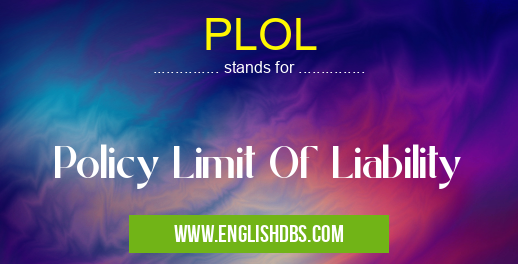What does PLOL mean in UNCLASSIFIED
PLOL (Policy Limit of Liability) is a crucial concept in insurance policies that defines the maximum amount an insurer will pay for a covered claim. Understanding PLOL is essential for policyholders to safeguard their financial interests and avoid potential coverage gaps.

PLOL meaning in Unclassified in Miscellaneous
PLOL mostly used in an acronym Unclassified in Category Miscellaneous that means Policy Limit Of Liability
Shorthand: PLOL,
Full Form: Policy Limit Of Liability
For more information of "Policy Limit Of Liability", see the section below.
What is PLOL?
PLOL represents the upper limit of an insurer's financial obligation under an insurance contract. It establishes the maximum payout the policyholder can receive for covered losses or damages, regardless of the actual amount incurred.
Significance of PLOL
- Provides Coverage Assurance: PLOL ensures that policyholders have a clear understanding of the extent of coverage provided by their insurance policies.
- Financial Protection: It protects policyholders from financial ruin by limiting their liability to the agreed-upon limit.
- Insurance Premium Determination: The PLOL directly influences insurance premiums, as higher limits typically result in increased premiums.
Determining PLOL
PLOL is specified in the insurance policy document and can vary depending on the type of insurance coverage and the policy's terms. Common factors that influence PLOL include:
- Policy Type: Different insurance policies (e.g., auto, homeowners, commercial liability) have varying PLOLs.
- Risk Assessment: Insurers evaluate the policyholder's risk profile and adjust the PLOL accordingly.
- Policyholder's Request: Policyholders can negotiate with insurers to increase the PLOL within certain limits.
Final Words: PLOL plays a vital role in insurance policies by defining the maximum liability of the insurer. It provides policyholders with financial protection, ensures coverage clarity, and influences insurance premiums. Understanding PLOL is crucial for informed decision-making and ensuring adequate coverage for potential risks.
